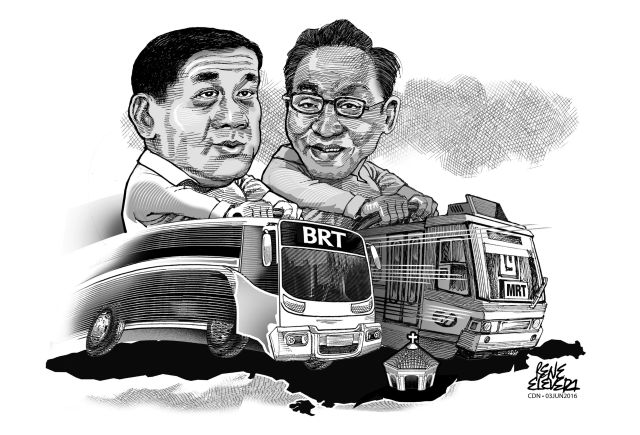
Amid his pronouncements over his Cabinet appointments and his controversial statements on his campaign against crime and the killings of journalists, President-elect Rodrigo Duterte pledged to pursue a railway project that would crisscross the country’s major urban centers.
The project’s scope is formidable and the president-elect is no doubt taking his cue from the stalled Mindanao Railway System project that was pursued by one of his predecessors, former president Gloria Macapagal Arroyo who sought China’s help in building the railway system.
But it’s not just the former president who dreamed up the proposal for a railway system in Mindanao which is far bigger than the existing dilapidated Light Railway Transit (LRT) and Metro Railway Transit (MRT) systems deployed in the greater Manila area.
In Cebu, the Japan International Cooperation Agency (JICA) lobbied for a railway system to complement the imminent deployment of the Bus Rapid Transit (BRT) system in Cebu City.
Former congressman and now Talisay City Mayor Eduardo Gullas lobbied for a railway system in Metro Cebu and he got the backing of several Cebuano legislators for this project.
But on hearing about the project and alarmed that it might replace the BRT, Osmeña went on the offensive and opposed the railway project during several public hearings held by the Department of Transportation and Communications (DOTC) in his capacity as congressman.
Eventually, outgoing President Benigno Aquino III, through the National Economic Development Authority (NEDA), approved the BRT and Cebu residents expect it to be fully operational by 2018.
Already, we’re seeing how a BRT system would benefit Cebu residents with the MyBus units of SM which fetch commuters in air-conditioned comfort to and from their SM Seaside City in the South Road Properties (SRP).
Though these bus units somehow help in offering Metro Cebu commuters a viable alternative to the dilapidated jeepneys that ply the city streets, the BRT is seen as the true test of the use of buses as the premier choice of public transportation.
To be honest, the BRT’s advantages outweigh the railway system owing to its more environment-friendly setup; it doesn’t require tearing down and occupying as much space as trains and they are less fuel dependent.
But as JICA pointed out in meetings with Metro Cebu officials, a railway system may eventually be an essential public transport solution to Metro Cebu residents and it dovetails nicely with President-elect Duterte’s plans for a railway system in the country.
We expect Metro Cebu officials to get behind the project and even Osmeña himself would likely support it as another alternative to existing public transport systems.